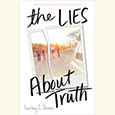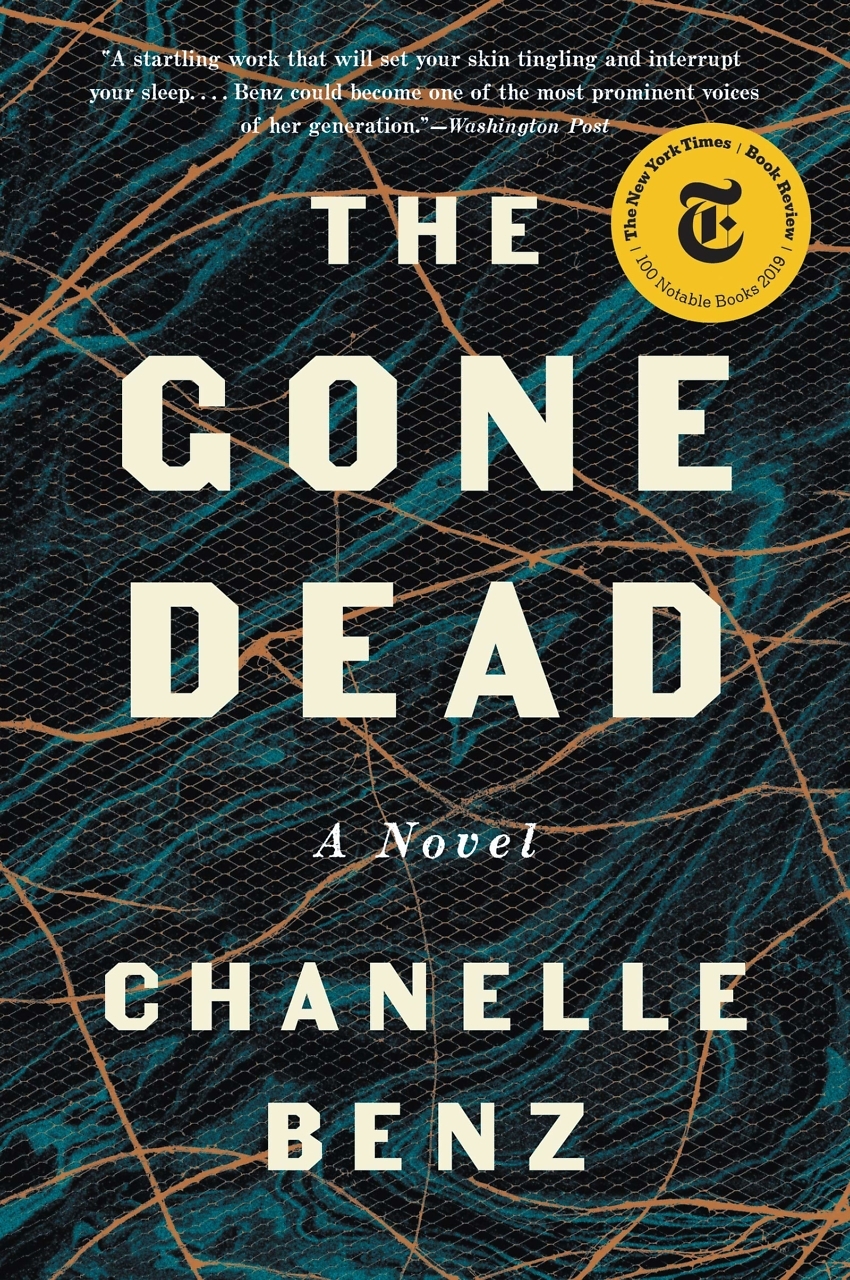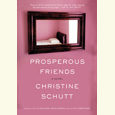The Collusion of Fact and Fiction
Gary Slaughter talks with Chapter 16 about the challenges and pleasures of writing an autobiographical novel
Nashvillian Gary Slaughter combines personal memory with extensive research in the creation of his Cottonwood novels, which are based on his own childhood during World War II. Slaughter grew up in Owosso, Michigan, near a German prisoner-of-war camp, and his novels begin with this little-remembered facet of American life during the war years. The final book in the series, Cottonwood Summer ’45, brings the novel’s young protagonists, Jase and Danny, to Nashville as they continue their adventures.
As the president of Gary Slaughter Corporation, Slaughter is a lecturer and corporate consultant in information technology. As an author, he has received many independent-publishing awards, including the ForeWord Book of the Year Award. He answered questions from Chapter 16 via email just before the launch of the book.
Chapter 16: In Cottonwood Summer ‘45, for the first time in the series, your young protagonists, Jase and Danny, travel to Nashville. What led you to set part of this novel in Nashville? Did you research the Nashville of 1945 in preparation for writing?
Gary Slaughter: Cottonwood Spring, the fourth novel in the series, was to have been the last. I hadn’t planned to write a fifth installment. But when disappointed fans pointed out that World War II continued through the summer of 1945, I changed my mind.
Since moving here in 1998, my wife Joanne and I have savored life in Nashville. So I wanted to this novel to acquaint readers broadly with the desirable attributes of this city, especially during the war years. Fortunately, in Cottonwood Spring, I introduced JB, a new character who had moved to Riverton, Michigan, from Nashville and become a friend of Jase and Danny. I used JB’s return to Nashville during the summer of 1945 as a literary mechanism to bring the three boys together for home-front adventures set in Tennessee.
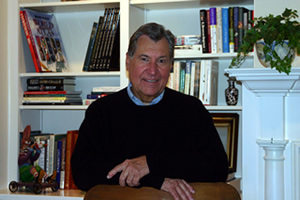 In 2007, when I was interviewed by John Seigenthaler on his public television show, A Word on Words, he related that during the war he had worked for his father’s construction company, building the VA hospital on White Bridge Road. His fellow workers were German POWs. With John’s encouragement, I used my poetic license to arrange for Jase and Danny to visit the construction site and meet young John Seigenthaler.
In 2007, when I was interviewed by John Seigenthaler on his public television show, A Word on Words, he related that during the war he had worked for his father’s construction company, building the VA hospital on White Bridge Road. His fellow workers were German POWs. With John’s encouragement, I used my poetic license to arrange for Jase and Danny to visit the construction site and meet young John Seigenthaler.
Because we are not native Nashvillians, we did extensive research about Nashville during the war. We also asked some friends who lived here in the 1940s to critique the first draft of the Nashville chapters for accuracy and context.
Chapter 16: Your Cottonwood novels are semi-autobiographical. Do you identify yourself more with Jase or with Danny? Did you have a childhood friendship that inspired the relationship of the two boys?
Slaughter: My novels have been described as a “thinly-veiled autobiography.” Jase Addison, the now-adult narrator, is a fictionalized version of me. The character Danny Tucker is based on my oldest and very best boyhood friend, Billy Curtis. Cottonwood fans of all ages simply adore Danny. He’s precocious, eccentric, clairvoyant, and extremely funny. Danny is particularly adept at tweaking the noses of pompous and patronizing adults, a quality greatly admired by his younger fans.
Jase and Danny vanquish villains by the score as they protect and defend their neighborhood, their hometown, and their country from enemies both at home and abroad. In fact, John Seigenthaler referred to these characters as “this generation’s Tom Sawyer and Huck Finn.”
A dozen years ago, Billy Curtis had no idea that I was writing a book based on our boyhood adventures. When he read Cottonwood Summer and discovered he was the star, Billy became Danny. There was only one small problem. Most of Danny’s triumphs are pure fiction. But Billy refused to acknowledge the difference between fact and fiction, and I too refused to tell. Our collusion has caused considerable angst among Billy’s friends and family. Cottonwood Summer ’45 is dedicated “to Billy Curtis, the only man I have ever known to be loved by every person he met.”
Chapter 16: Are there particular resources, books, or workshops that have been helpful to you as a developing writer? What advice do you give those who ask you how to begin the process?
Slaughter: Other than high school and college English composition classes, I’ve never had any formal training in writing. It’s all been on-the-job training. After a six-year stint as a naval officer, I became a corporate information-technology consultant. This profession required me to publish or perish. Over my consulting career, my list of non-fiction publications, including books, articles, and white papers, totaled some four single-spaced pages.
When I began writing fiction, I had no difficulty making the transition, for a number of reasons. First, during my life, I have read an enormous amount of good fiction. I also have an active imagination. And fortunately I was born into a family of storytellers who were superb role models. Every Sunday, at the family farm, we gathered in the cool shade of a giant elm tree where I listened to hours of colorful stories told by my grandfather, my father, and my uncles.
I’ve taught writing workshops for prospective fiction writers. My first piece of advice is this: if you don’t like to read and haven’t read much during your life, you should consider another outlet for your creative energies. Writing a novel may not be a good investment of your time and energy. However, if you do decide to write a novel, I strongly suggest that you write about what you know, as I did in the Cottonwood novels. I wrote about the time, the place, and the people I experienced first-hand, growing up in Owosso, Michigan, during World War II.
Chapter 16: As you note on your website, many Americans today don’t remember the hundreds of thousands of German prisoners of war who worked in American fields and factories throughout the war. Can you share with us a specific memory or two of the German POWs in your hometown? That time clearly had a huge impact on your later direction as a writer.
Slaughter: During the war, there were over 426,000 POWs interned in American prison camps. There are two reasons why so few people today know about them. First, by 1946, every POW was repatriated. Most Americans who were old enough to experience and remember the POWs are no longer living. Second, when they were repatriated, all records associated with their internment were sent to their home countries with them, denying historians access to these records. Thus, there is little written on the subject.
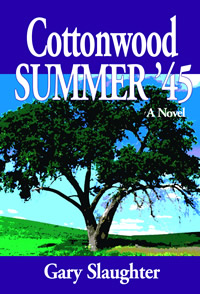 My obsession with POWs began in June of 1944 when two prisoners escaped from Camp Owosso with the assistance of two young Owosso women who worked with the Germans at the canning factory in my neighborhood. A fictionalized version of this escape, the resultant treason charges, and dramatic trial of the women is a major Cottonwood Summer storyline. I also witnessed POWs rescue a neighborhood woman and her newborn baby. The POWs dashed into her blazing house and carried the woman and baby out to the street. The grateful family and neighbors cheered and slapped the POWs on the back.
My obsession with POWs began in June of 1944 when two prisoners escaped from Camp Owosso with the assistance of two young Owosso women who worked with the Germans at the canning factory in my neighborhood. A fictionalized version of this escape, the resultant treason charges, and dramatic trial of the women is a major Cottonwood Summer storyline. I also witnessed POWs rescue a neighborhood woman and her newborn baby. The POWs dashed into her blazing house and carried the woman and baby out to the street. The grateful family and neighbors cheered and slapped the POWs on the back.
Chapter 16: In addition to writing fiction, you often speak about your experiences in the publishing industry. Do you have any thoughts to share on the rapid adaptation of Americans to e-books?
Slaughter: As a former information-technology professional, the rapid acceptance of e-books doesn’t surprise me. It parallels rapid assimilation of other technologies in recent years. E-books offer readers features and benefits that paper books do not. And they are cheaper.
As a creator and seller of books, however, I am concerned that there are still dozens of e-book readers and e-book formats in the marketplace. Of course, the major players are Apple, Amazon, and Barnes & Noble. I don’t believe Barnes & Noble can afford to remain in the competition for long. The market will sort itself out in the next few years, offering more format compatibility and lower costs for both e-books and e-book readers.
Chapter 16: Your books have been adopted into school curriculums. What kind of responses have you gotten from student readers?
Slaughter: After a four-year campaign led by my wife Joanne, the Michigan Department of Education has approved Cottonwood Summer as an official U.S history textbook for all Michigan high schools including my alma mater, Owosso High. I can’t tell how extremely proud I am of this. Closer to home, again thanks to Joanne, this past year all of the Cottonwood books were approved for use as U.S. history textbooks at the nine high schools in the Williamson County, Tennessee, school system.
Both teachers and students are enthusiastic because students learn the history of the World War II era while being thoroughly entertained by the antics of Jase and Danny. They agree that it’s an innovative approach to teaching history.
Chapter 16: We end with our favorite question for authors: what are you reading?
Slaughter: During periods of heavy writing, I read far fewer books than usual. After a ten-hour day of concentrating on my computer monitor, I haven’t the energy nor the eye stamina to read more. Not surprisingly, most of my recent reads have been books set in World War II, including Doug Stanton’s In Harm’s Way, the story of the sinking of the USS Indianapolis. Another was the Last Stand of the Tin Can Sailors by James D. Hornfischer. His description of the last battle between the Japanese fleet and our naval forces was well written and extremely informative. I also enjoyed Unbroken by Laura Hillenbrand, who was our neighbor in Bethesda, Maryland. Our daughter once babysat Laura. Finally, October Fury by Peter Huchthausen describes a confrontation between a Soviet submarine and a U.S. Navy destroyer during the Cuban Missile Crisis. I was aboard that destroyer and played a key role in the peaceful resolution of this dangerous conflict. This story will be retold in October on the fiftieth anniversary of the Cuban Missile Crisis.
Gary Slaughter will discuss Cottonwood Summer ’45 in two Nashville events: at BookMan/BookWoman on May 9 at 7 p.m. and at Parnassus Books on May 10 at 6:30 p.m.

